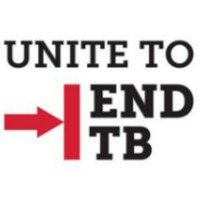
A researcher from the University’s Institute of Psychology, Health and Society, Dr Ruaraidh Hill, working closely with a pan-European team, conducted two reviews to improve access, uptake and use of services for people at risk of tuberculosis (TB) in vulnerable and hard-to-reach populations.
World TB Day, falling on 24 March each year, is designed to build awareness about the global epidemic of TB and efforts to eliminate the disease. The theme for this year’s Day is ‘Unite to end TB’.
The new reviews, published online in this month’s The Lancet Infectious Disease, looked at evidence on ways to improve access, uptake and use of services for people at risk of TB in vulnerable and hard to reach populations. Dr Hill teamed up with European Centre for Prevention and Disease Control (ECDC) to produce the reviews.
10.4 million cases
According to ECDC TB is one of the top 10 causes of death worldwide. In 2015, there were estimated 10.4 million cases of TB and 1.8 million people died from the disease. Over 95% of TB deaths occur in low- and middle-income countries.
In 2014, there were 58,008 cases of TB reported in Europe. Where TB is less common overall, cases of the disease are concentrated in groups of people that are socially disadvantaged and vulnerable, underserved or hard-to-reach.
Dr Hill contributed to the research, bringing his experience of developing related reviews and guidance for the National Institute for Health and Care Excellence (NICE). The research, commissioned by ECDC informed European TB guidelines for vulnerable and under served or hard-to-reach people.
To facilitate effective prevention tailored approaches are needed for these groups, whose socioeconomic conditions or lifestyle make it difficult to recognise they have or are at risk of TB and get the right help.
Providing support
Vulnerable and hard-to-reach populations include: homeless people or people with a history of homelessness, people who misuse drug s or alcohol, people in or have been in prison or enforced segregation, some vulnerable migrant populations who are excluded from health and social care services and other marginalised, poor and remote groups.
The purpose of the guidance is to provide support, in the form of scientific advice on the options available, to national policymakers, those responsible for the planning of healthcare and social support systems, national TB programmes, and civil society/non-governmental organisations with an interest in TB, as well as those working with vulnerable groups, when considering strengthening TB prevention and control among vulnerable populations where TB is of lower incidence overall.
Improving early diagnosis
Dr Hill, said: “These complementary, systematic reviews provide an overview of interventions to improve early diagnosis of TB and treatment completion in these populations, as well as factors to consider when developing programmes for health communication, awareness and education, and programme monitoring and evaluation.
“The evidence reviewed indicates that improving access can be achieved through outreach programs using outreach teams and mobile units. Outreach teams included community health workers, street teams, peers and non-clinical professionals who establish a close contact with the patients to facilitate screening, contact tracing and treatment completion through enhanced case management.
“Conducting high quality systematic reviews in these areas is challenging as the evidence is difficult to find and characterise. We used smart working methods to help overcome these challenges. These included building on existing work conducted for National Institute for Health and Care Excellence (NICE).
“This helped us produce relevant and useful scientific advice for ECDC.
To remain relevant, guidance and the reviews under pinning it needs to keep up with changing evidence. Our approach could help guidance keep up-to-date and useful”
TB elimination
As Europe is targeting TB elimination, the development, implementation and evaluation of additional interventions to improve TB diagnosis and treatment in vulnerable populations would greatly benefit TB control.
The two systematic reviews, entitled ‘Barriers and facilitators to the uptake of tuberculosis diagnostic and treatment services by hard-to-reach populations in countries of low and medium tuberculosis incidence: a systematic review of qualitative literature’ and ‘Effectiveness of interventions for diagnosis and treatment of tuberculosis in hard-to-reach populations in countries of low and medium tuberculosis incidence: a systematic review’, informed ECDC guidance that can be found here http://ecdc.europa.eu/en/publications/Publications/TB-guidance-interventions-vulnerable-groups.pdf
A collection of ECDC resources to mark World TB Day can be found here http://ecdc.europa.eu/en/healthtopics/Tuberculosis/world-tb-day/Pages/2017-unite-to-end-TB.aspx
NICE guidance on TB can be found here https://www.nice.org.uk/guidance/ng33
